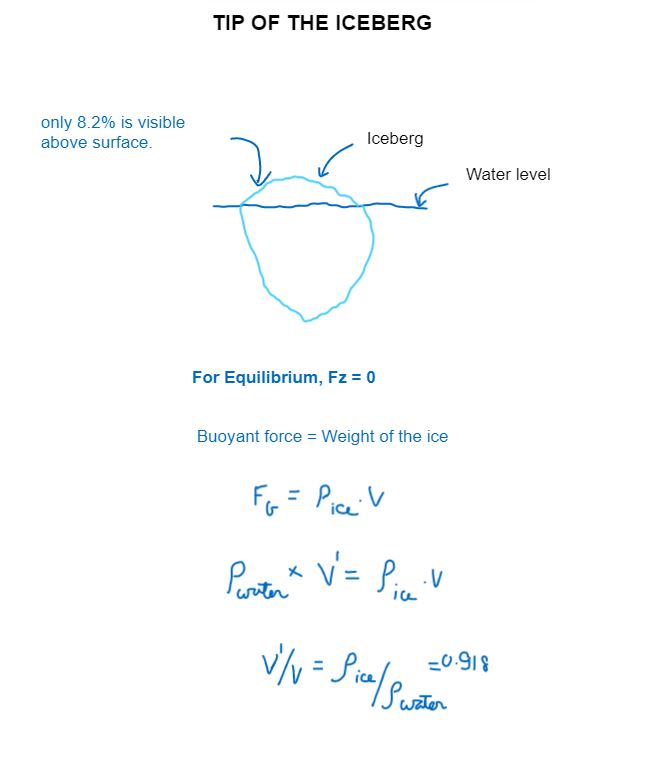Have you ever wondered how the phrase Tip of the iceberg is coined,
It comes from the fact the iceberg floating over water has major portion of it submerged under water, but exactly how much portion?
✔ Ice has density lesser than water hence it floats in water, to be precise the density of ice is about 918 kg/m3.
✔ As per Archimedes’s principle a body will experience an upward force in a fluid which is equal to the weight of fluid displaced by the body.
The upward force exerted by the fluid is called buoyant force.
✔ To maintain the equilibrium of floating ice the vertical force acting upon it need to balance out. So
Weight of ice = Buoyant force
Weight of ice = density of ice * total volume of ice,
W ice = ρ (ice)* V
Buoyant force = density of water * volume of water displaced by ice
Fb = ρ (water) * V’
✔ For equivalent vertical force to be zero
ρ (ice)* V = ρ (water) * V’
V’/V = ρ (ice) / ρ (water)
V’/V = 918/1000 = 0.918
✔ So it is only 8.20 % of entire iceberg that we see above water and rest 91.8 % is submerged in water, Hence the tip of the iceberg.
💡 But have you ever wondered that how come ice has less density than water, both have same chemical composition. Share your insights on this (answer lies in physical chemistry)
This is a post on basic physics and buoyant force, any comments or suggestions are welcomed.

Comments are closed